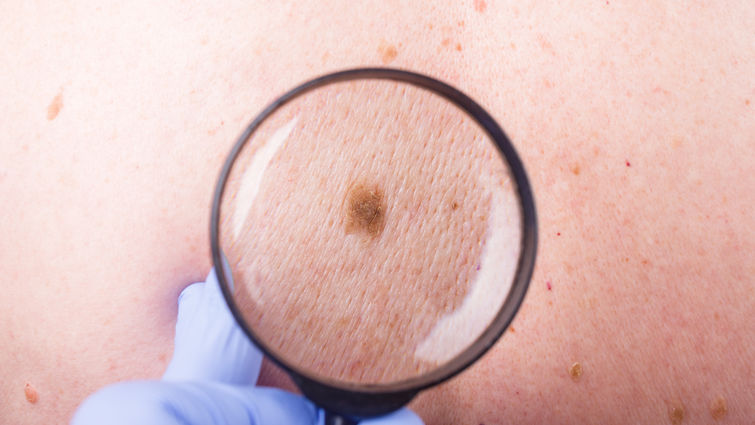
Skin cancer is by far the most common of all types of cancers, according to the American Cancer Society. Most people think they know the basics: stay out of the sun, fair-skinned people are more likely to get it, and sunscreen can decrease your risk. However, that just scratches the surface.
Yes, sunscreen decreases your risk of skin cancer. In fact, Loma Linda University Cancer Center director, Mark E. Reeves, MD, PhD, says recent advances have made the cream significantly more powerful. He says years ago the strongest was 10 SPF, and now the norm is 50 to 100 SPF.
“It is a very powerful cancer prevention tool, and people need to remember that,” Reeves says. “Don’t just see it as a way to prevent sunburn but to prevent cancer.”
Sunscreen isn’t the only thing Reeves wants people to keep in mind. He wants the public to remember these five little-known skin cancer facts — things most of his patients never knew.
- There are actually many types of skin cancers. Skin cancer is broad. Reeves says it often comes in four major types: squamous cell carcinoma of the skin, basal cell carcinoma of the skin, melanoma, and merkel cell carcinoma. These four types make up more than 95% of the skin cancer occurrences. Both squamous and basal cell carcinoma are the most common and easily treatable types.
- Melanoma is the most serious of them all. Melanoma is serious. It can spread quickly, and it used to be nearly impossible to treat once it spread. Reeves says advances in treatments within just the past four years have saved lives. A decade ago, very few patients with metastatic melanoma would survive. Reeves says he has recently treated patients with melanoma that spread to the lungs and the liver, but after usage of new treatments, such as immunotherapy, those patients are alive with no evidence of disease.
- You can develop melanoma that is not on your skin. Melanoma is a form of skin cancer that can present in places in the body that are not the skin. For example, Reeves says patients can get diagnosed in places like the rectum, vagina, or even the esophagus. The reason it’s called melanoma is because it starts in the melanocytes — which is a mature melanin-forming cell — and these are located in other parts of the body that are not the skin. Unfortunately, this type of melanoma is one people cannot see, so it usually presents itself at a more advanced stage.
- The way you sunburn can signal what type of skin cancer you may develop. Reeves says the way a person’s skin reacts after prolonged sun exposure can offer a clue as to which type of skin cancer they are at risk of developing. If a person’s skin darkens after prolonged sun exposure and is later diagnosed for skin cancer, that individual is more likely to be diagnosed with squamous or basal cell carcinoma. If a person has had severe sun burns and was later diagnosed with skin cancer, that patient is more likely to be diagnosed with melanoma.
- You can develop skin cancer under your toenail or fingernail. When you develop melanoma underneath the toenail or fingernail, it’s called a subungual melanoma. It’s often overlooked because when most patients have it they assume it’s just a bruise underneath the nail. Reeves says to beware — if a person has a bruise that does not grow out with the nail and go away as the nail grows, he or she should see a dermatologist and get it biopsied.
The Loma Linda University Cancer Center is dedicated to answering all of your cancer concerns and joining you on your journey to wholeness. As a comprehensive cancer center, we offer resources from support to innovative treatments. To explore any of the resources or meet with a physician to address your needs, visit the website or call 1-800-782-2623. If you plan on having fun in the sun this summer, check out the video below on some quick safety tips from Loma Linda University Health dermatologist Betsy Furukawa, MD.
